TaylorMade Stealth 2 Drivers
WHAT YOU NEED TO KNOW: The TaylorMade Stealth 2 drivers take another bold step in moving to fully carbon composite constructions, this time with special attention to making mis-hits more like centre hits. The changes this year include a new variable thickness carbon composite face that offers improved ball speeds for off-centre hits. Meanwhile, there’s even less titanium in the body, freeing up more mass to add more stability over last year’s models. The trio includes the low-spin Stealth 2 Plus, which offers a sliding weight to tweak ball flight; Stealth 2, the neutral flight, high-forgiveness option ideal for most golfers; and Stealth 2 HD, the most stable model of the three with draw-biased weighting to fight the slice.
Stealth 2 Plus, (8, 9, 10.5 degrees); Stealth 2, Stealth 2 HD, (9, 10.5, 12 degrees). All models feature an adjustable hosel that changes loft by plus/minus two degrees. RRP AED 2,845 – AED 2,945 (TBC)
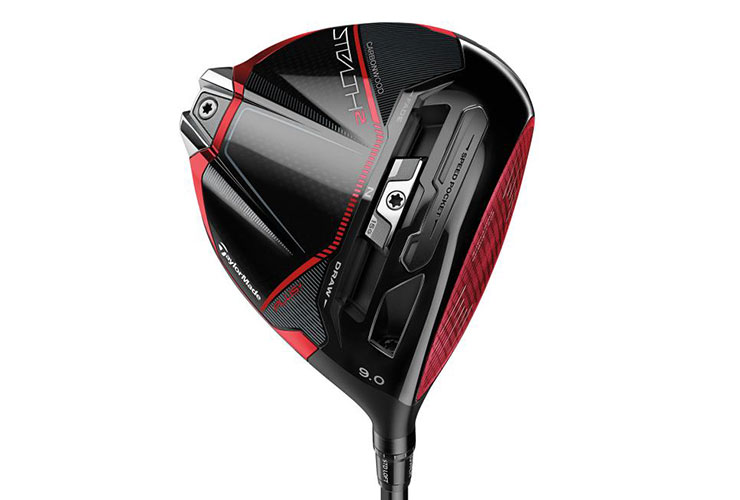
3 COOL THINGS
1. The hottest face story from 2022 gets hotter for 2023. When TaylorMade debuted the carbon composite face in last year’s Stealth, it wasn’t so much the magical properties of carbon fibres that made it a better face. It was that carbon fibre made the face 40 per cent lighter than a titanium face. In the Stealth 2 drivers, it’s lighter still, just 24 grams or just shy of half of what a standard titanium face might weigh. That frees up more mass to explicitly pinpoint the optimal centre of gravity position and forgiveness for each of the three Stealth models. Basically, that means slightly more forward for the low-spin Stealth 2 Plus, slightly more rearward on the forgiving Stealth 2 and slightly deep and more heelward on the high-launching, slice-correcting Stealth 2 HD.
But that’s not the only improvement in the carbon composite face on this year’s Stealth 2. Like the original, the face is constructed by 60 distinct layers of carbon fibre that are arranged to provide a more flexible perimeter with thinner sections around the centre thicker region. This year, those perimeter areas are even thinner. Thinner means more flexible, thereby leading to more consistent ball speed all across the face. It’s more than just making a thicker centre and thinner perimeter, said Tomo Bystedt, TaylorMade’s senior director of product creation for woods.
“The thickest part was basically in the centre face before and we moved it about seven millimetres toe-ward,” he said, noting that makes a little more area of the face on the heel side thinner. “That evens out the speed profile of the face because obviously the heel is going to tend to be slower because you have a little bit shorter span in the heel. So this really maximises the hottest area of the face.”

2. More carbon equals more forgiveness. It wasn’t only the face that increased forgiveness for this year’s edition of TaylorMade drivers. A new body construction also reduced the non-carbon sections to almost none, freeing up more mass that was used in different ways in Stealth 2 Plus, Stealth 2 and Stealth 2 HD. In past models, there was a titanium frame that housed the carbon composite face and then a ring of either titanium or aluminium that circled the body or like in last year’s Stealth, a titanium sole plate. The carbon composite crown and sole sections were bonded to that ring. Now the ring itself is a carbon-reinforced composite, making it even lighter and allowing for a fully carbon composite sole to replace the titanium sole plate.
While that made the sole itself lighter, it allowed for more mass to be precisely positioned. On the Stealth 2 Plus, that means the sliding weight is now 15 grams instead of 10 to help increase the low forward centre of gravity position, but it also means more mass also could go into the weight at the rear base of the driver, far away from that CG. It’s what TaylorMade calls the “inertia generator”, and it sits low in a keel at the back end of the driver to maximise off-centre hit stability. In fact, it’s nearly triple the weight that was in the back before. On the Stealth 2, that rear weight is now 25 grams and it’s some 30 grams on the high-forgiveness Stealth 2 HD, some four or five times what it was before. The freedom to move mass to specific different regions within the head is what sets the Stealth 2 family apart, Bystedt said.
“I think you can see where we’re starting to basically break the trade off between ‘Do you want a low-spin, low-forward CG type of club or do you want the forgiving one?’” he said.
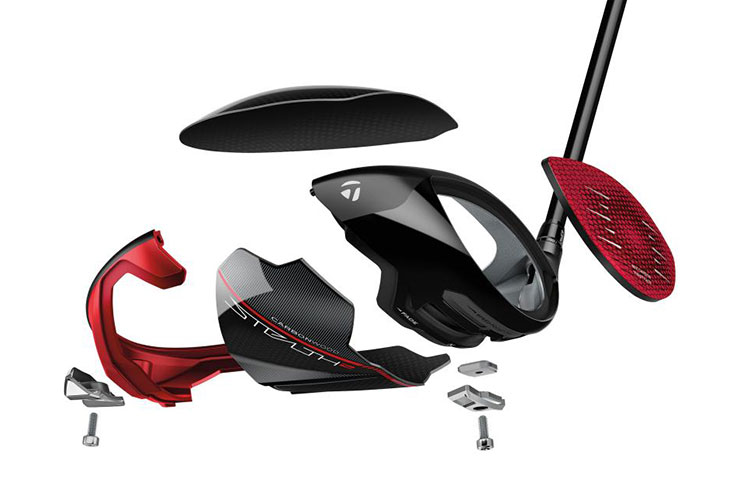
3. Which one’s for me? While each of the Stealth 2 drivers are more forgiving than last year’s models, particularly the Stealth 2 Plus, they still target distinct audiences. The movable weight on the Stealth 2 Plus is more substantial so it can better tweak a slight fade or slight draw preference, but it is still aimed at players who contact the centre of the face more often. As the lowest spin offering, higher swing speed players will see more benefits from this model versus the others. The Stealth 2 offers the most ideal mix of forgiveness, launch and spin for most non-elite players. Meanwhile, the Stealth 2 HD is the highest-launching and most forgiving of the three drivers. Its rear weight is repositioned more toward the heel to particularly target the slice, and its standard lie angle is four degrees more upright than Stealth 2 Plus to encourage more of a draw.
TaylorMade Stealth 2 Fairway Woods
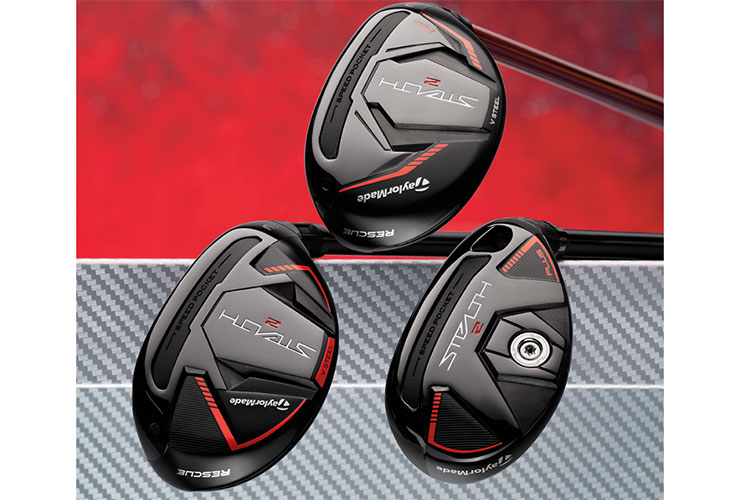
WHAT YOU NEED TO KNOW: The Stealth 2 family of fairway woods and hybrids benefit from a new lightweight carbon composite crown section that extends around the edges of the perimeter to save more weight and lower the centre of gravity for better launch and increased energy transfer. The line includes high-forgiveness, draw-enhancing fairway woods and hybrids (the HD models), the easier launching, faster-faced standard models and better player options with the more iron-like flight of the Stealth Plus hybrid and multiple adjustability and driver-like face of the titanium Stealth Plus fairway wood.
Fairway woods: Stealth 2 Plus (15, 18 degrees); Stealth 2 (15, 16.5, 18, 21, 24 degrees); Stealth 2 HD ($xxx; 16, 19, 22 degrees). Hybrids: Stealth 2 (19, 22, 25, 28, 31 degrees); Stealth 2 HD (19, 22, 25, 28 degrees); Stealth 2 Plus (17, 19.5, 22 degrees, adjustable). Prices TBC
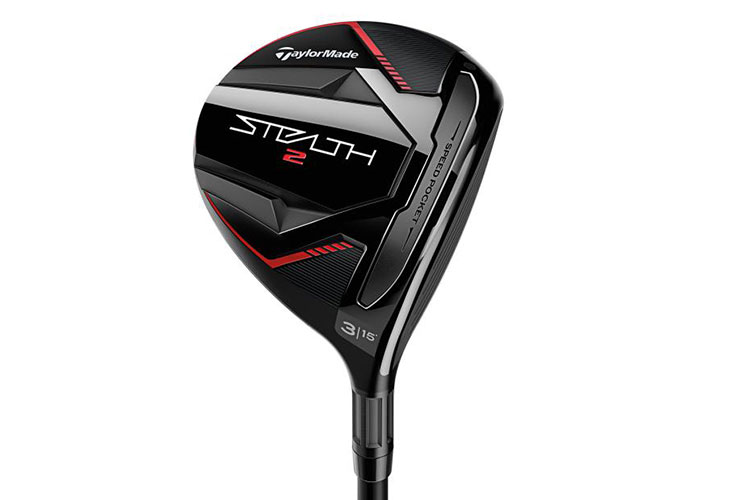
3 COOL THINGS
1. A carbon crown that goes beyond the crown. With fairway woods and hybrids making up the longest clubs hit off the fairway, figuring out ways to lower the centreof gravity (to help shots launch higher) and fixing mis-hits (because the vast majority of impacts occur below the centre of the face) seem crucial. For the new Stealth 2 fairway woods and hybrids, that meant the weight-saving benefits of a traditional carbon composite crown weren’t enough. These clubs extend the carbon composite around the edges of crown so that it overlaps into the rear and side skirt portions of each head. That allows the saved weight to be used differently in each model.
On the Stealth 2 Plus fairway wood and hybrid, that weight is pushed low and forward to decrease spin, while also providing for multiple adjustability features for better players to more specifically tweak their ball flight and distance gapping needs. On the Stealth 2 versions, it’s a mix of low and to the perimeter for improved launch with forgiveness. For the Stealth 2 HD models, the majority of that weight is pushed to the perimeter so off-centre hits lose less ball speed.
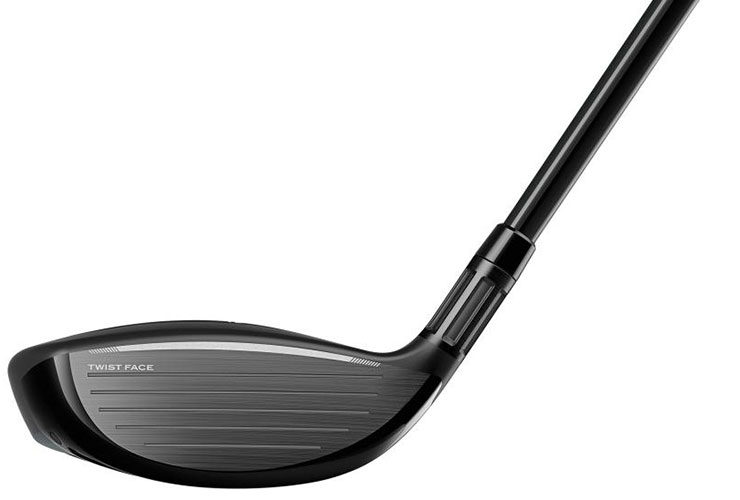
2. Distinct shapes for different players and their flight needs. The solutions to make fairway woods and hybrids more effective for different types of players is not just about how different materials might be used or how weight might be redistributed. Sometimes it’s also a case of different shapes. For instance the Stealth 2 HD fairway woods and hybrids are larger to create more forgiveness on off-centre hits (the fairway wood is a whopping 200 cubic centimetres), but they’re still designed with flatter soles to help keep the CGs plenty low. Meanwhile, the standard Stealth 2 models lower the crown height from past models to create lower CG and a more confidence-inspiring shallow face. Finally, the Stealth 2 Plus hybrid is more compact to give better players the workability they prefer in an iron with just the right amount of added forgiveness.
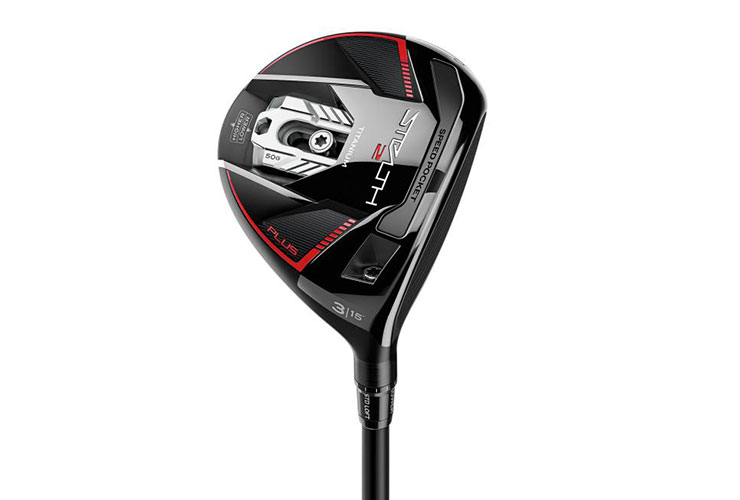
3. How the technology in a $xxx fairway wood makes you forget its price. While all the Stealth 2 fairway woods and hybrids benefit from new variable face thickness patterns that extend the area of the face that produces the highest ball speeds and all also feature a slot in the sole to help shots lower on the face fly faster, only the Stealth 2 Plus fairway wood has the added power of driver-like titanium. TaylorMade is on its fourth generation of compact, better-player titanium fairway woods, but this one easily is the most playable for average golfers, too. Past versions have used a massive steel weight pad to push the centre of gravity extremely low and well forward. That’s perfect for low-spin but not so great for off-centre hit forgiveness. The solution with Stealth 2 Plus fairway is to take that massive weight pad (50 grams on this year’s model) and have it slide from front to back. There are eight possible positions that allow the user to up the forgiveness by nearly 20 per cent and increase the spin, another way to help less than elite players get the ball in the air. Even better, the sliding weight moves in and out from a compartment within the sole, keeping the surface smooth for clean turf interaction.
“We wanted to see if there was something we could do to make that more inclusive and more appealing to a wider audience,” said Bystedt. “So this new system completely changes the club without you having to change the whole club or put a different head on there.”
TaylorMade Stealth HD Irons
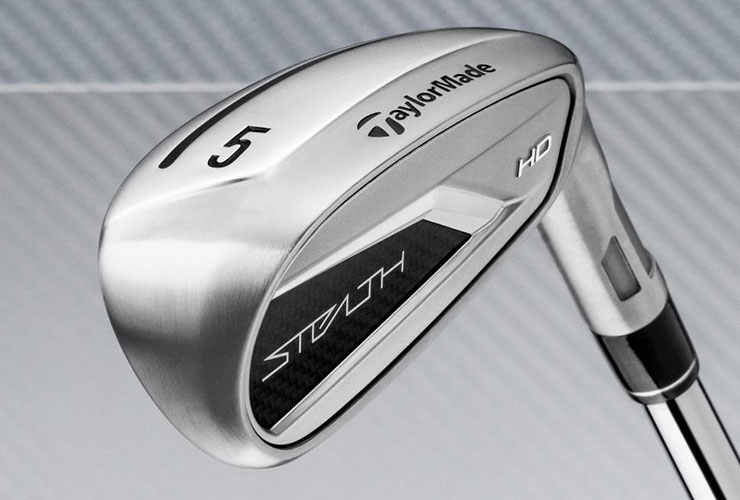
WHAT YOU NEED TO KNOW: Designed with the slower swinger in mind, the Stealth HD irons offer a low-profile clubhead designed to create a lower centre of gravity to promote a higher launch with a draw bias. The step-down sole helps mitigate the effect of shots hit a tad heavy.
PRICE/AVAILABILITY: $xxx per iron (steel).
3 COOL THINGS
1. Function over form. The low-profile clubhead is, well, a different look, but when players start hitting better shots, any opposition to the shape tends to quickly melt away. Especially when the shape is a main contributor to helping get the ball in the air and promotes a draw bias.
The shallow face height combines with a wide sole to drive the centre of gravity low. The shape combines with a multi-material cap-back that is significantly lighter than the steel it is replacing. That not only drives the centre of gravity lower as well by removing weight from up high but helps make the club easier to square at impact. Further, because there is no badge bonded to the back of the club, it allows the face to move more freely.
An additional benefit of the CG being low is that low is where the majority of iron impacts occur, and you want the centre of gravity as close to where shots are being struck as possible.
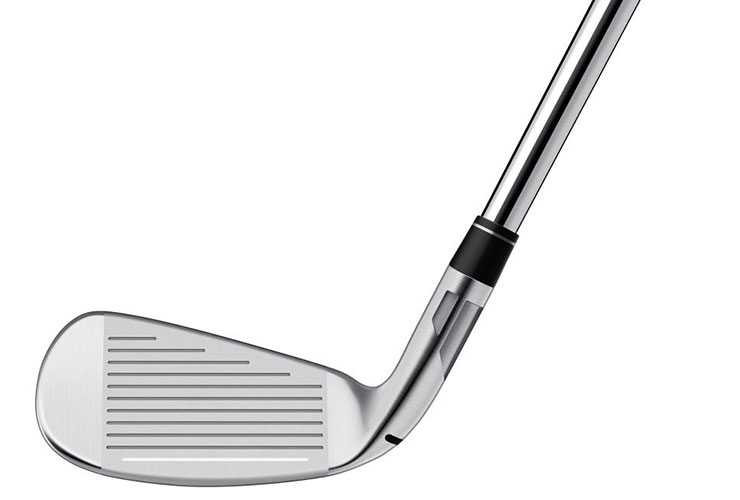
2. Understanding the golfer fuelled this design. To design a club for less-skilled players, you first need to understand what makes them tick. The challenge with that is in order to understand that player type, you need to test with them first and the less skilled the player, the more unreliable the data can be.
“This group has a very wide array of swings,” said Matt Bovee, TaylorMade’s director of product creation for irons. “We wanted to simplify the process for them.”
Feeling this player valued hitting quality shots more often than targeting a score, TaylorMade boiled its player testing down to this: Did you consider it a successful shot? “We found that high launching and high spinning was good,” said Bovee. Anything with a draw flight also was valued. Importantly, the data showed that between 26 and 31 degrees of loft there was only about a 1.5-yard difference.
“Strong lofts just don’t get the ball in the air,” said Bovee. “We found the optimal launch with a 7-iron was with a 30-degree 7-iron. It made us look at the loft progression throughout the set. We also found that this player really didn’t need an iron lower than the 5-iron so we start the set there and use sole slots in the 5- through 8-irons to create speed and launch in the clubs where these players need the most help.”
3. Sole searching. This player tends to make contact with more turf than they need to, so creating a sole design that helps the club exit the ground easier is almost a necessity. For the Stealth HD (HD stands for “high draw,” by the way), that not only meant a wide sole, but one precisely shaped.
Specifically, the sole features a “step-down” feature in the rear of the sole that helps prevent digging while still being able to maintain a wide sole. But the design doesn’t stop there. There is a noticeable curvature of the sole from heel to toe that not only prevents heel and toe digs in certain lies, but promotes contact slightly higher on the face, which enhances launch and spin.









